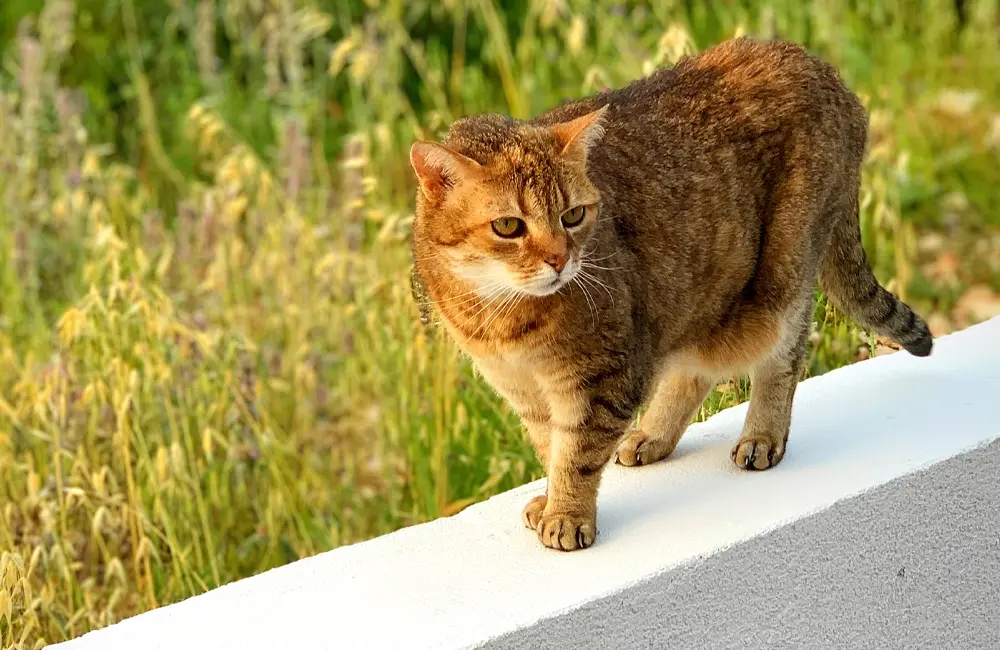When you notice that a group of feral cats have taken up residence in your neighborhood, you might immediately want to spring into action. Do you know how to help feral cats in your neighborhood?
Despite popular belief, not all outdoor cats need to become indoor cats, and that is often the case with feral cats. To help them properly, it’s important to slow down, learn more about feral cats, and address the situation the right way. Let’s learn how to help a feral cat colony today.
1. Get Educated
The very first thing that you should do when you have decided to help the feral cats in your area is go back inside and start reading up on cat colonies!
That’s right. Unless a cat is in immediate, critical distress, nothing that you do right now is going to help as much as learning more about how to help feral cats the right way.
Many people assume that the best thing to do for feral cats is catch them and take them to a shelter. What these people don’t realize, however, is that a large number of feral cats that go into shelters will never be adoptable. This may lead to them being humanely euthanized due to shelter space issues.
To avoid this happening to the cats that you want to help, it’s important to learn about what actually helps feral cats. The primary thing that you can do to help cats in your area is to get involved with TNR efforts, also known as trap-neuter-return.
2. Plan To TNR
TNR has become the best practice for handling feral cat colonies, and many areas have even adapted the practice as official policy. From shelters to animal control groups to determined individuals, many groups work to do TNR to help cats in the community.
So, what is TNR?
TNR stands for trap, neuter, and release. Here’s what that means:
- Trap: Humane traps are used to round up all cats living in the colony.
- Neuter: Cats are taken to a veterinarian to be spayed or neutered. Cats are also vaccinated. Typically, their ears are tipped to mark that they have been through TNR.
- Release: Once recovered, cats are released back in the outdoor area that they came from.
Learning how to do this isn’t a simple process, and there is a lot to consider. If you’re ready to become the TNR handler for your area, great! There are so many wonderful resources to learn from, and you will make a real difference for the cats near you.
If you aren’t quite ready to run the program yourself but are ready to help, contact local organizations and find one that helps with TNR. By providing funding or helping hands, you can get a qualified and experienced TNR group into your area.
3. Feed and Shelter
Once you’ve got a TNR plan underway, you can start to provide supplemental food and shelter to the cats. Though it might feel cruel to not feed cats, feral cats know how to provide for themselves! If you start to feed them, you will need to keep up this practice as they will begin to rely on it.
During certain seasons like winter and summer, however, the cats can benefit from extra help. In winter, for example, it can be hard for cats to stay warm or find enough food. Lol Cats add, “You can help a feral cat by building them an inexpensive shelter and ensuring they get fed. Placing out a heated water dish will also ensure they have access to water.”
When access to food and water for outdoor cats becomes dangerous or difficult, it’s great to help them survive by providing them with food as well as shelter. Be sure that anything that you set up is cleaned regularly, kept sanitary, and not going to increase problems for the colony.
4. Spread The Word
If you’re living in a neighborhood, the chances are high that you’re not the only one that has noticed the cats, and you might not be the only one planning to take action. The best way to have a successful TNR movement and to help feral cats is to work together. Some members may even be willing to help with your efforts.
At the base level, however, it is important to educate neighbors about feral cats and why simply taking them to the shelter is not the right option. As mentioned before, people often do not realize how this ultimately leads to the unnecessary euthanization of many cats.
Creating a simple flyer explaining your plan, goals, and what resources you have can make a big difference! Not only will you get to learn a lot about how the community feels about your efforts, but you also will make a genuine change in how the community views the cats.
The Catington Post is reader-supported. That means, if you make a purchase through links on our site, we may earn an affiliate commission. All images and names which are not the property of The Catington Post are the property of their respective owners.






